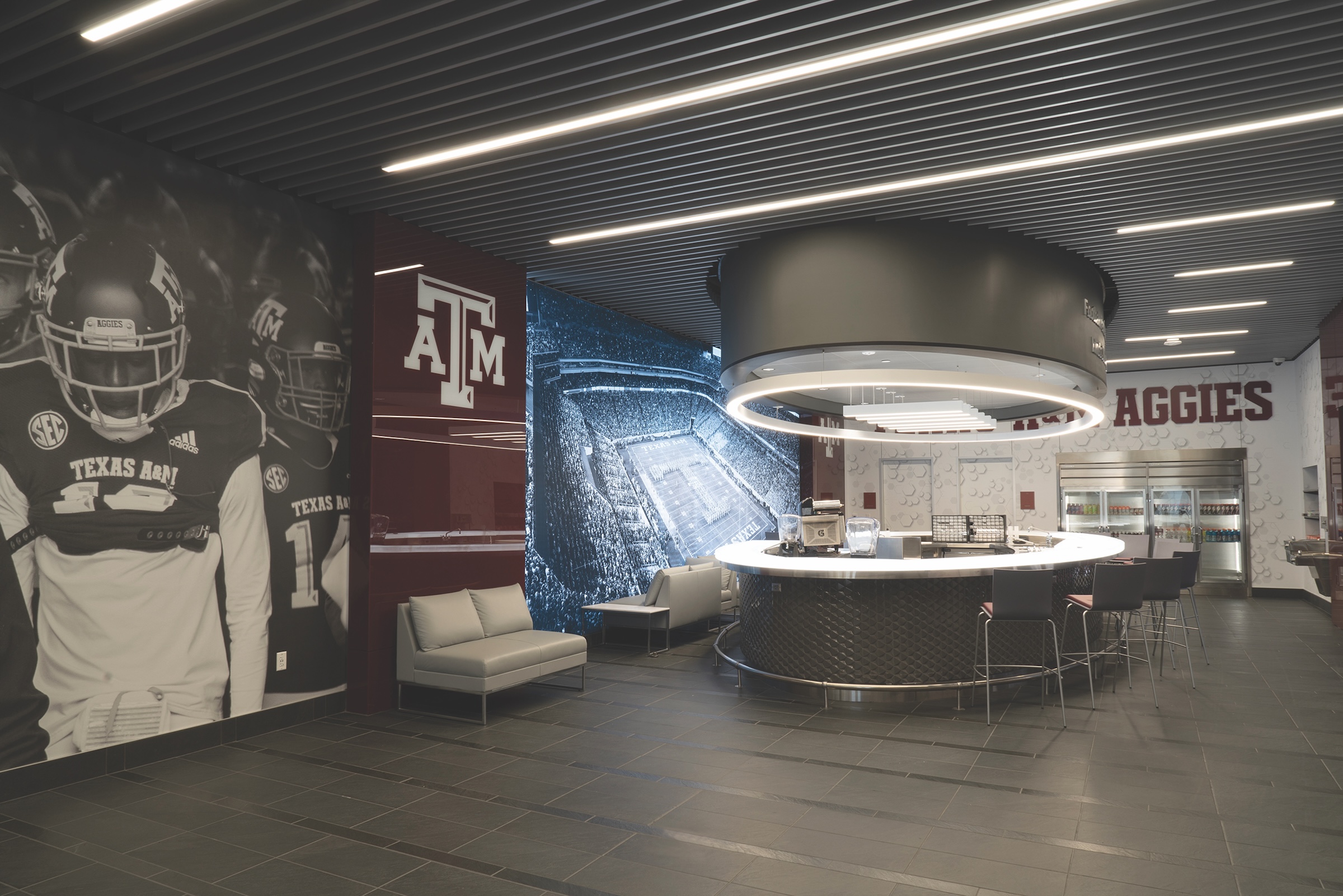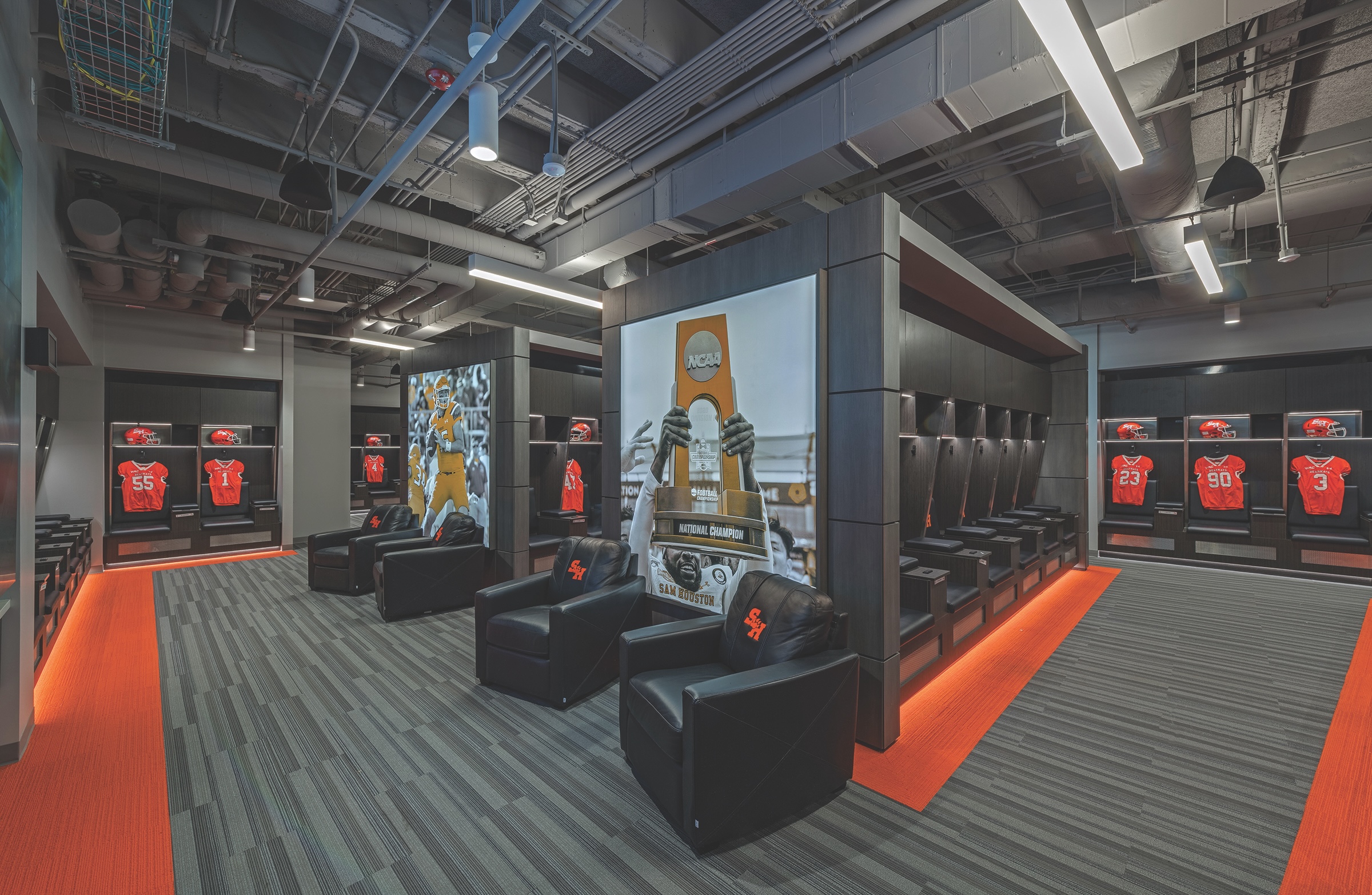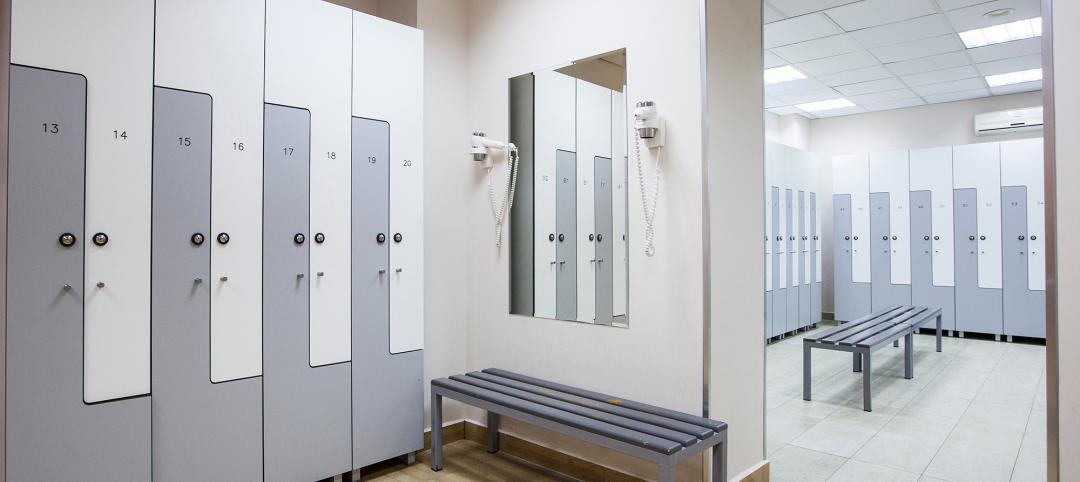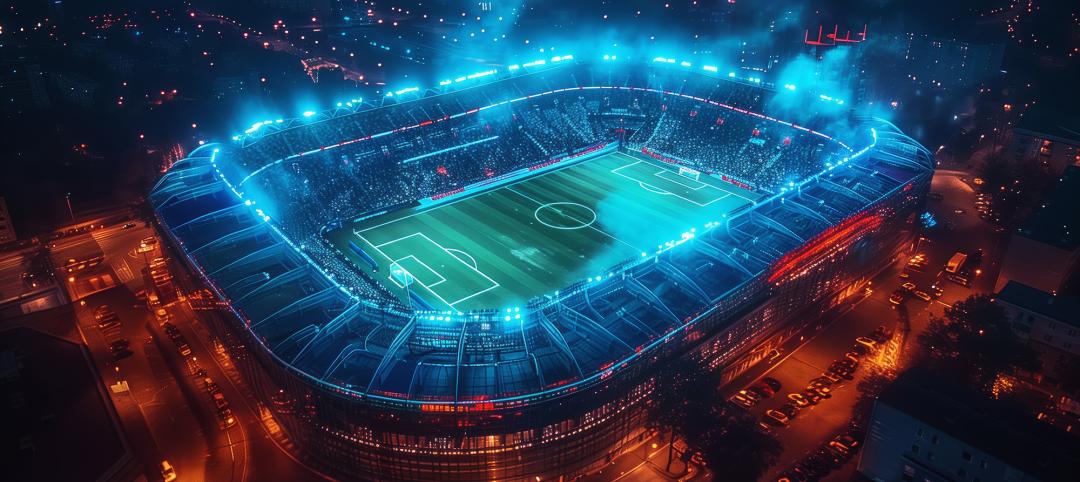Since July 1, 2021, student-athletes in most states have had the right to control the use of their names, images, and likenesses (NIL) for marketing and publicity purposes, and be compensated for that usage while maintaining their amateur status to continue playing for their college teams.
This change has led colleges and universities to strike NIL deals with businesses and advertisers, through which individual athletes can negotiate. Booster groups, like alumni associations, have also formed NIL Collectives that raise money from NIL agreements that is made available to students in exchange for using their persona. Sweeter deals can motivate student-athletes to transfer, which complicates teams’ recruiting and roster-building objectives.
NIL policies have raised expectations among student-athletes about the quality of sports training and performing facilities, in ways that present new design, renovation, and construction opportunities for AEC firms with sports practices.
“Schools’ facilities need to be more competitive, and find revenue-generating solutions,” says Sean Plunkett, Managing Principal with PBK Sports, a division of PRK Architects, which has pursued this avenue for higher ed business. He’s seeing more modifications to campus sports venues that create different experiences, such as pay tiers for seating, tailgating, and food and beverage.
On August 22, BD+C interviewed Plunkett and Melvin Robinson, who had recently joined PBK Sports as National Director of Sports Client Engagement. Robinson’s resume includes nearly 15 years with the University of Georgia Athletic Association, with stints as Director of Facilities and Assistant Athletic Director. They had just met with the coaches and staff of a major Big Ten state university, “where football matters,” says Plunkett.

Over the past decade, Robinson has watched college sports programs engage in a recruiting arms race, with their athletic facilities as weapons. “It started in the locker room: who has the best pool, the best barber shop? It has all been about flash and pop.” During this period, and especially over the past few years, he’s seen student-athletes evolve into “entrepreneurs,” which can add another layer of stress. College sports programming now includes health, wellness, and financial services to help their athletes handle the pressure.
Student-athletes, he says, have come to expect training facilities to resemble mini versions of ESPN. “You need digital spaces, technology, studios. Hollywood meets higher ed,” Robinson quips. And because college sports, especially football and basketball, are ubiquitous on TV and online platforms, their facilities often define the school’s image for student-athletes and their parents.
“The facilities are a big part of recruiting, enticing, and retaining athletes,” says Robinson.
The cost of new construction or renovation usually isn’t an impediment, says Plunkett, who notes that financing typically comes from ticket sales, donors, and vendors. To help its clients fill gaps in financing, PBK suggests things like seating values, and offering diverse fan experiences both inside and outside the stadium or arena.
Robinson observes that professional sports teams are generally more attentive to the comfort and convenience of their fans, whereas colleges are all about the players. However, pros’ training facilities are catching up. “NIL is leveling the playing field,“ says Robinson.
Related Stories
Sports and Recreational Facilities | Oct 24, 2024
Stadium renovation plans unveiled for Boston’s National Women’s Soccer League
A city-owned 75-year-old stadium in Boston’s historic Franklin Park will be renovated for a new National Women’s Soccer League team. The park, designed by Fredrick Law Olmsted in the 1880s, is the home of White Stadium, which was built in 1949 and has since fallen into disrepair.
Designers | Oct 1, 2024
Global entertainment design firm WATG acquires SOSH Architects
Entertainment design firm WATG has acquired SOSH Architects, an interior design and planning firm based in Atlantic City, N.J.
Products and Materials | Aug 31, 2024
Top building products for August 2024
BD+C Editors break down August's top 15 building products, from waterproof wall panel systems to portable indoor pickleball surface solutions.
Designers | Jul 29, 2024
Inclusive design for locker rooms: Providing equitable choice and access
SRG designers pose the question: What would it look like if everyone who wanted to use a restroom or locker room could?
Great Solutions | Jul 23, 2024
41 Great Solutions for architects, engineers, and contractors
AI ChatBots, ambient computing, floating MRIs, low-carbon cement, sunshine on demand, next-generation top-down construction. These and 35 other innovations make up our 2024 Great Solutions Report, which highlights fresh ideas and innovations from leading architecture, engineering, and construction firms.
Sports and Recreational Facilities | Jul 15, 2024
Smart stadiums: The future of sports and entertainment venues
These digitally-enhanced and connected spaces are designed to revolutionize the fan experience, enhance safety, and optimize operational efficiency, according to SSR's Will Maxwell, Smart Building Consultant.
Sports and Recreational Facilities | May 23, 2024
The Cincinnati Open will undergo a campus-wide renovation ahead of the expanded 2025 tournament
One of the longest-running tennis tournaments in the country, the Cincinnati Open will add a 2,000-seat stadium, new courts and player center, and more greenspace to create a park-like atmosphere.
Sports and Recreational Facilities | Apr 25, 2024
How pools can positively affect communities
Clark Nexsen senior architects Jennifer Heintz and Dorothea Schulz discuss how pools can create jobs, break down barriers, and create opportunities within communities.
Mixed-Use | Apr 9, 2024
A surging master-planned community in Utah gets its own entertainment district
Since its construction began two decades ago, Daybreak, the 4,100-acre master-planned community in South Jordan, Utah, has been a catalyst and model for regional growth. The latest addition is a 200-acre mixed-use entertainment district that will serve as a walkable and bikeable neighborhood within the community, anchored by a minor-league baseball park and a cinema/entertainment complex.
Cultural Facilities | Apr 8, 2024
Multipurpose sports facility will be first completed building at Obama Presidential Center
When it opens in late 2025, the Home Court will be the first completed space on the Obama Presidential Center campus in Chicago. Located on the southwest corner of the 19.3-acre Obama Presidential Center in Jackson Park, the Home Court will be the largest gathering space on the campus. Renderings recently have been released of the 45,000-sf multipurpose sports facility and events space designed by Moody Nolan.

















